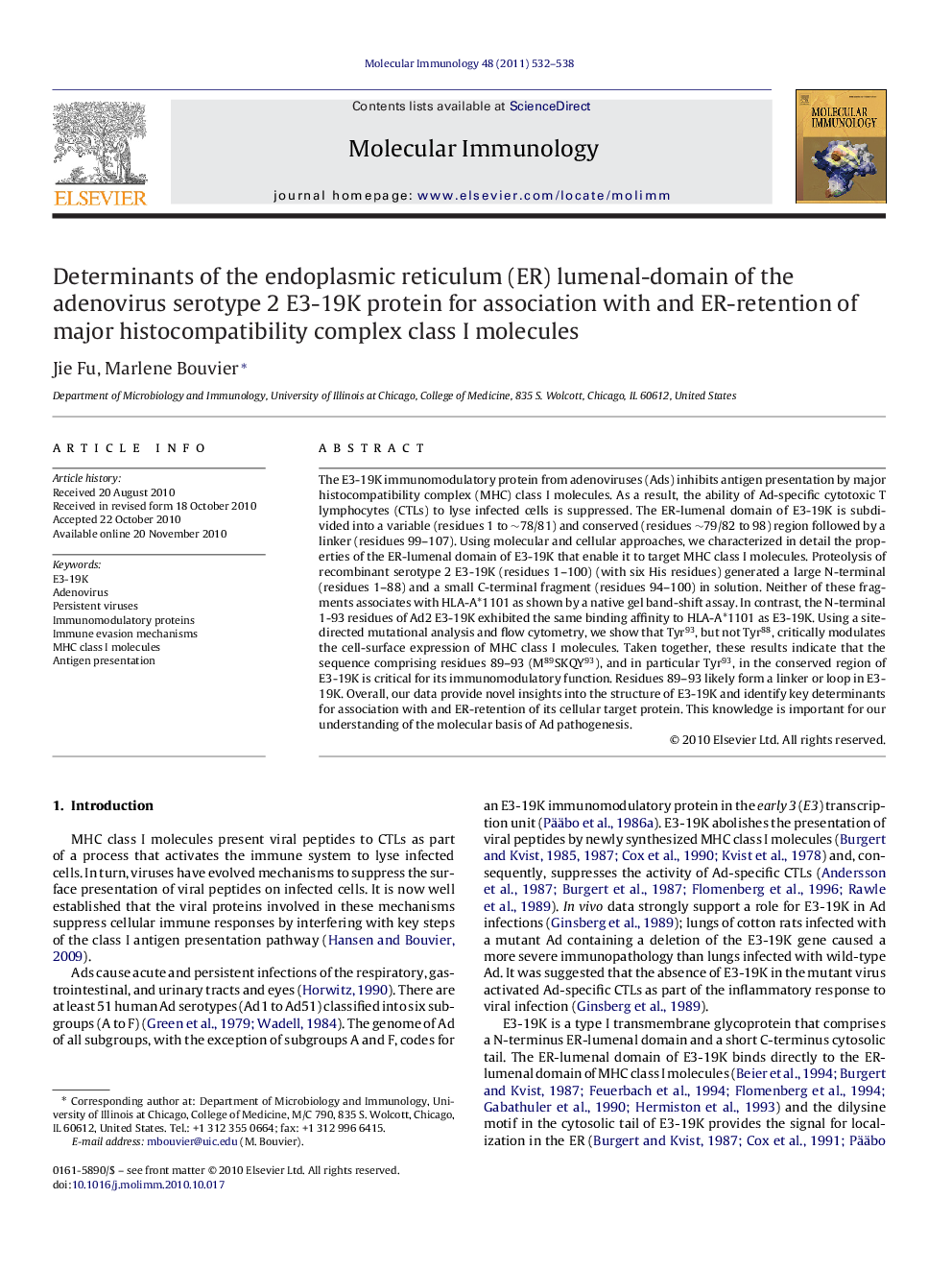| Article ID | Journal | Published Year | Pages | File Type |
|---|---|---|---|---|
| 5917695 | Molecular Immunology | 2011 | 7 Pages |
The E3-19K immunomodulatory protein from adenoviruses (Ads) inhibits antigen presentation by major histocompatibility complex (MHC) class I molecules. As a result, the ability of Ad-specific cytotoxic T lymphocytes (CTLs) to lyse infected cells is suppressed. The ER-lumenal domain of E3-19K is subdivided into a variable (residues 1 to â¼78/81) and conserved (residues â¼79/82 to 98) region followed by a linker (residues 99-107). Using molecular and cellular approaches, we characterized in detail the properties of the ER-lumenal domain of E3-19K that enable it to target MHC class I molecules. Proteolysis of recombinant serotype 2 E3-19K (residues 1-100) (with six His residues) generated a large N-terminal (residues 1-88) and a small C-terminal fragment (residues 94-100) in solution. Neither of these fragments associates with HLA-A*1101 as shown by a native gel band-shift assay. In contrast, the N-terminal 1-93 residues of Ad2 E3-19K exhibited the same binding affinity to HLA-A*1101 as E3-19K. Using a site-directed mutational analysis and flow cytometry, we show that Tyr93, but not Tyr88, critically modulates the cell-surface expression of MHC class I molecules. Taken together, these results indicate that the sequence comprising residues 89-93 (M89SKQY93), and in particular Tyr93, in the conserved region of E3-19K is critical for its immunomodulatory function. Residues 89-93 likely form a linker or loop in E3-19K. Overall, our data provide novel insights into the structure of E3-19K and identify key determinants for association with and ER-retention of its cellular target protein. This knowledge is important for our understanding of the molecular basis of Ad pathogenesis.
